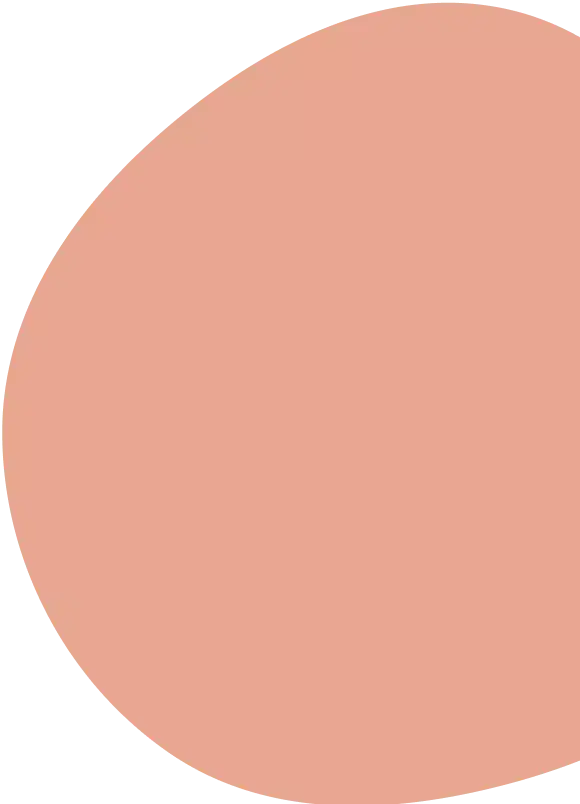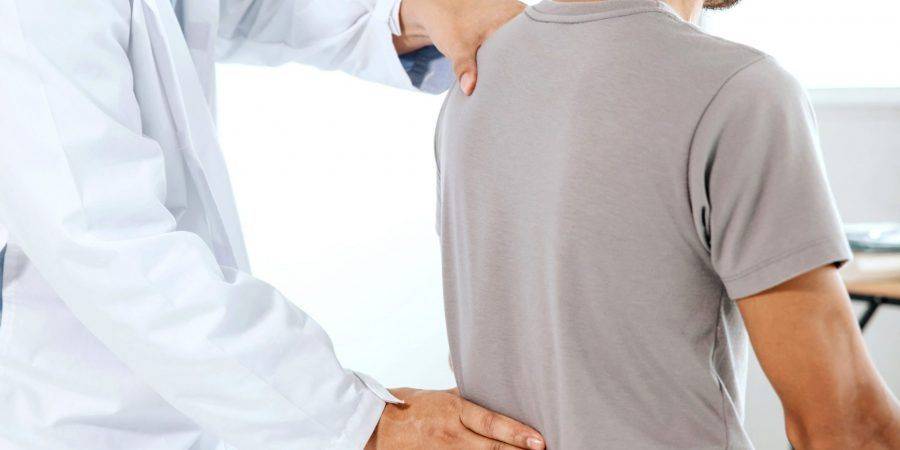



Bone Setting: Hong Kong Chinese Medicine Guide
13th November 2025


Many Hong Kong people seek help from “bone setting” when they have a dislocation, sprains or strains. Although treatments for many musculoskeletal injuries might have been taken over by modern medicine nowadays, bone setting is still commonly applied by Chinese medicine practitioners and remains well-known among Hong Kongers. In fact, apart from ankle sprains and muscle strains, many physical conditions can also be treated with Chinese medicine (TCM) bone setting.
What is bone setting?
“Bone setting” is the common name of "Traditional Chinese Medicine Orthopedics and Traumatology", also regarded as the general term for all TCM orthopedic procedures. Unlike orthopedics and traumatology of modern medicine, Chinese medicine bone setting is a combination of TCM orthopedics and traumatology, osteopathy and chiropractic. It integrates the theories of Chinese medicine, human pathology, anatomy, physiology, biomechanics, sports medicine and osteopathy. The discipline focuses on treating both internal and external injuries of the musculoskeletal system, such as bone fractures, dislocations, muscle injuries, tendons or ligaments injuries, other soft tissue injuries as well as acute and chronic pain. Practitioners use mostly non-invasive procedures to treat musculoskeletal disorders (MSDs), examples are Chinese medicine, manipulation, fixation, acupuncture, cupping and massage, etc.
Bone setting functions: How does bone setting work?
Bone setting can bring the following major therapeutic effects:
- Promoting Qi and blood circulation
- Removing bruise
- Dredging the meridian system (pathway of Qi circulation)
- Reducing swelling
- Relieving pain
- Regenerating cells, bones, cartilages, muscles and soft tissues
- Generating Qi and blood
- Relaxing muscles and joints
In Chinese medicine bone setting, musculoskeletal disorders and traumas are generally classified into 3 stages: early, middle and late stages. Considering the stages and degree of injuries, bonesetters (who are Chinese medicine practitioners in HK) may apply various treatment procedures for different effects.
-
Early stage: Redness, heat, pain and swelling are usually the major symptoms and signs at the onset of musculoskeletal injuries, for which bonesetters would mainly focus on promoting Qi and blood circulation, removing blood stasis, dredging meridians, reducing swelling and pain relief.
-
Middle stage: As the symptoms and signs gradually go away, bonesetters are going to put more emphasis on promoting blood circulation to regenerate musculoskeletal tissues.
-
Late stage: As the patient progresses towards recovery, it enters the late stage of the bone setting treatment process. Since prolonged musculoskeletal disorders usually weaken internal organs and multiple systems, it is crucial to promote healing of the entire body as a whole from a Chinese medicine perspective. At this stage, Chinese medicine practitioners would mainly recover bones and soft tissues by restoring Qi and blood, relieving muscles and activating meridians and collaterals, which also strengthens one’s immunity.
Bone setting treatment procedures
Different from modern medicine, Chinese medicine bone setting treats musculoskeletal disorders with the conjunctive use of TCM orthopedics, osteopathic and chiropractic approaches. Bone setting procedures are mostly non-invasive, thus leaving mild to no damage to the human body. In clinical practice, Chinese medicine practitioners (or bonesetters) would provide different bone setting treatment procedures depending on the type of injuries, severity, patient’s physical conditions, medical history and preference, etc. Common bone setting treatment procedures include, but are not limited to:
-
Internal Chinese medicine: Internal Chinese medicine treatments for bone setting are usually taken orally. Most of them function by promoting Qi and blood circulation and removing bruises, such as Chuanxiong, Safflower, Peach Seed, Angelica, Rehmannia, White Peony, etc.
-
Topical Chinese medicine: Bone setting therapy usually combines both internal and external administration of Chinese medicines. For example, Chinese medicinal ingredients are often mixed with alcohol for topical administration for sprains and strains. Most of these topical medications contain Chinese medicine ingredients like Chuanxiong, Safflower, Peach Seed, Myrrh, Notoginseng, Turmeric, etc.
-
Manipulation: Manipulation is a non-invasive treatment with the effects of adjusting bones, muscles and joints, dredging Qi and blood, and fixing dislocations.
-
Fixation: In the cases of fractures or dislocations, fixation procedures are often applied to keep the bones and joints in place in order to facilitate fracture healing and joint fixation.
-
Acupuncture: Chinese medicine acupuncture is a TCM unique therapy. It can promote Qi and blood circulation, dredge the meridian system, reduce swelling and relieve pain, etc., and therefore can be integrated with the bone setting treatment.
-
Cupping: Cupping is often applied together with acupuncture by Chinese medicine practitioners. It functions by stimulating meridians, Qi and blood circulation to dehumidify the body, reduce swelling and relieve pain, etc. More importantly, cupping therapy is effective in relaxing muscles and relieving soft tissue tenderness.
-
Tuina: Tuina is a unique TCM massage technique to relax soft tissues, relieve pain, stimulate Qi and blood circulation, etc.
-
Physical exercise training: Beside the above procedures, physical exercise training is also essential to facilitate recovery, strengthen muscles and soft tissues as well as prevent future injuries. Physical training can also promote Qi and blood circulation according to TCM theory.
How Alea can help you save on insurance
Bone setting indications: When should I get bone setting therapy?
Most damage to bones, muscles, skin, flesh, meridians, blood, and organs caused by both external and internal forces can be treated by bone setting. Bone setting is usually used to handle musculoskeletal disorders like various types of fractures, joint dislocations, soft tissue injuries, trauma, sprains or muscle strains, etc. Except for severe trauma or bleeding and injuries that may require treatment by modern medicine and surgery, Chinese medicine bone setting is applicable to the following common fractures, dislocations, and soft tissue injuries as a non-invasive approach:
Bone setting Indications of common fractures:
- Fractures of forearms / upper limbs (e.g. distal radius and ulna fractures)
- Phalanx fracture
- Ankle fracture / broken ankle
- Talar neck fracture
- Foot fractures (e.g. calcaneal fracture, distal phalanx fracture)
Bone setting Indications of common joint dislocations
- Minor scoliosis
- Disc displacement
- Temporomandibular joint (TMJ) dislocation
- Upper extremity dislocations (e.g. shoulder dislocation, elbow dislocation)
- Metacarpophalangeal (MCP) joint dislocation
- Interphalangeal (IP) joint dislocations
- Lower extremity dislocation (e.g. hip dislocation)
- Ankle dislocation
Bone setting Indications of common soft tissue injuries
- Cervical injuries (e.g. neck sprain, cervical spondylosis, stiff neck)
- Shoulder injuries (e.g. shoulder sprain/strain, frozen shoulder, supraspinatus tendonitis)
- Elbow injuries (e.g. elbow ligament or tendon injuries, lateral epicondylitis / tennis elbow)
- Wrist injuries (e.g. wrist sprain/strain, De Quervain tenosynovitis / mommy thumb)
- Lumbar injuries (e.g. lumbar strain, lumbar intervertebral disc herniation, low back pain)
- Hip injuries / hip sprain / hip strain
- Knee injuries (e.g. meniscus tear)
- Ankle injuries (e.g. ankle sprain, ankle strain)
Where to get bone setting treatment?
In Hong Kong, legal bone setting treatments should be provided by registered Chinese medicine practitioners. Bone setting treatments are available at the following local Chinese medicine clinics:
Bone setting therapy in the public sector
In Hong Kong, there are 18 Public Chinese Medicine Clinics operated jointly by the Hospital Authority, non-governmental organizations and local universities. They all provide the public with Chinese medicine and bone setting therapy services.
Bone setting therapy in the private sector
Here are some recommendations of local TCM clinics where you can get bone setting treatments:
HKU Clinical Centre for Teaching and Research (Central)
Address (Central): Room 703, The Galleria, 9 Queen’s Road Central, Hong Kong
Address (Pok Fu Lam): 10 Sassoon Road, Pokfulam
Phone: 31693170 / [3152 2139](tel:8523152 2139)
CUHK Chinese Medicine Specialty Clinic cum Clinical Teaching and Research Centre
Address: 1/F, Sino Building, Chung Chi College, CUHK, NT, Hong Kong
Phone: 39439933 / 26037203
HKBU Chinese Medicine Clinics
Address: Multiple locations are available, see address here
Phone: click this for various contacts
Atlas Chinese Medicine & Physiotherapy Centre
Address: Flat 01, 22/F, The Righteous Centre, 585 Nathan Road, Mong Kok, Kowloon
Phone: 23866388
Acupuncture, Chinese Medicine & Herb Clinic Hong Kong | Healthwise Chinesemed
Address: Room 1003, Winway Building, 50 Wellington Street, Central, Hong Kong
Phone: 25267908
Alive Wellness
Address: Room 1503, Car Po Commercial Building, 18-20 Lyndhurst Terrace, Central
Phone: 25418600
Balance Health
Address: 2705, 27/F, Universal Trade Centre, 3-5 Arbuthnot Road, Central
Phone: 25303315
Vitality Center
Address: 9/F, Li Dong Building, 9 Li Yuen Street East, Central
Phone: 25371118
Leung Bonesetter
Address: 283 Castle Peak Rd, Cheung Sha Wan, Hong Kong
Phone: 23610622 / 60810622
UE Chinese Medicine Clinic
Address: Room 408, 4/F, Universal Commercial Building, 65-69 Peking Road, TST, HK
Phone: 98881714
Leung Wah Sing Chinese Herbalist
Address: G/F, 100 Shan Tung Street, Mong Kok, Kowloon, Hong Kong
Phone: 23843297
Chinese Medicine Centre, St. Teresa’s Hospital
Address: G/F, Main Block, 327 Prince Edward Road, Kowloon
Phone: 22003109
Wilson T.S. WANG Chinese Medicine Day Services Centre
Address: G/F & 1/F, Tung Po Court, 202 Reclamation Street, Yau Ma Tei, Kowloon
Phone: 37420333
How much does bone setting cost?
Valid Hong Kong citizens can enjoy the government subsidized services at any of the public Chinese medicine clinics in Hong Kong at a consultation fee of HK$ 120 per visit, while that of non-subsidized services ranges from HK$ 130-180. The fee for bone setting services ranges from HK$210-520 per course.
On the other hand, the cost of bone setting therapy at private TCM clinics can be widely variable, with most ranging from HK$ 210-1,600 per visit depending on the type of injuries, treatment methods, severity, required Chinese medications and treatment duration, etc.
Please be reminded that some musculoskeletal disorders may not be cured by a single bone setting treatment course, some patients may need several sessions or even longer treatment duration. The cost of bone setting treatment can be multiplied for some cases.
*All amounts are in HKD and were last updated in June 2024. No responsibility is accepted for any inaccuracies, errors, or omissions. It is always best to call ahead to make sure the information is accurate.
Does insurance cover bone setting?
In Hong Kong, bone setting therapy ought to be provided by registered Chinese medicine practitioners. According to Alea, most local medical insurance plans cover Chinese medicine under outpatient benefits. Beware that such coverage is generally subject to a reimbursement limit per visit and limited to a fixed number of visits per year. As for international health insurance policies, Chinese medicine is also reimbursed under outpatient benefits and often subject to a sub-limit under Complementary medicines. Beware of sub-limits and whether your plan requires the practitioner to be registered with the Chinese Medicine Council of Hong Kong. Depending on the plan and insurer, a GP referral letter may be required to receive reimbursement. If you have health insurance questions, contact Alea's advisors at hello@alea.care or 26062668.
Looking for life or health insurance for yourself, your family or your team?
Do you already have an insurance policy? You could find a better plan!
Alea brings you choice, unbiased advice and outstanding service, with access to 100+ options from 25+ insurance companies. If you already have an insurance policy, switching insurance policies with Alea doesn’t cost you a thing.
Get free quotes with us today.
An advisor will be in touch to answer all your questions!
This article was independently written by Alea and is not sponsored. It is informative only and not intended to be a substitute for professional advice and should never be relied upon for specific advice.

